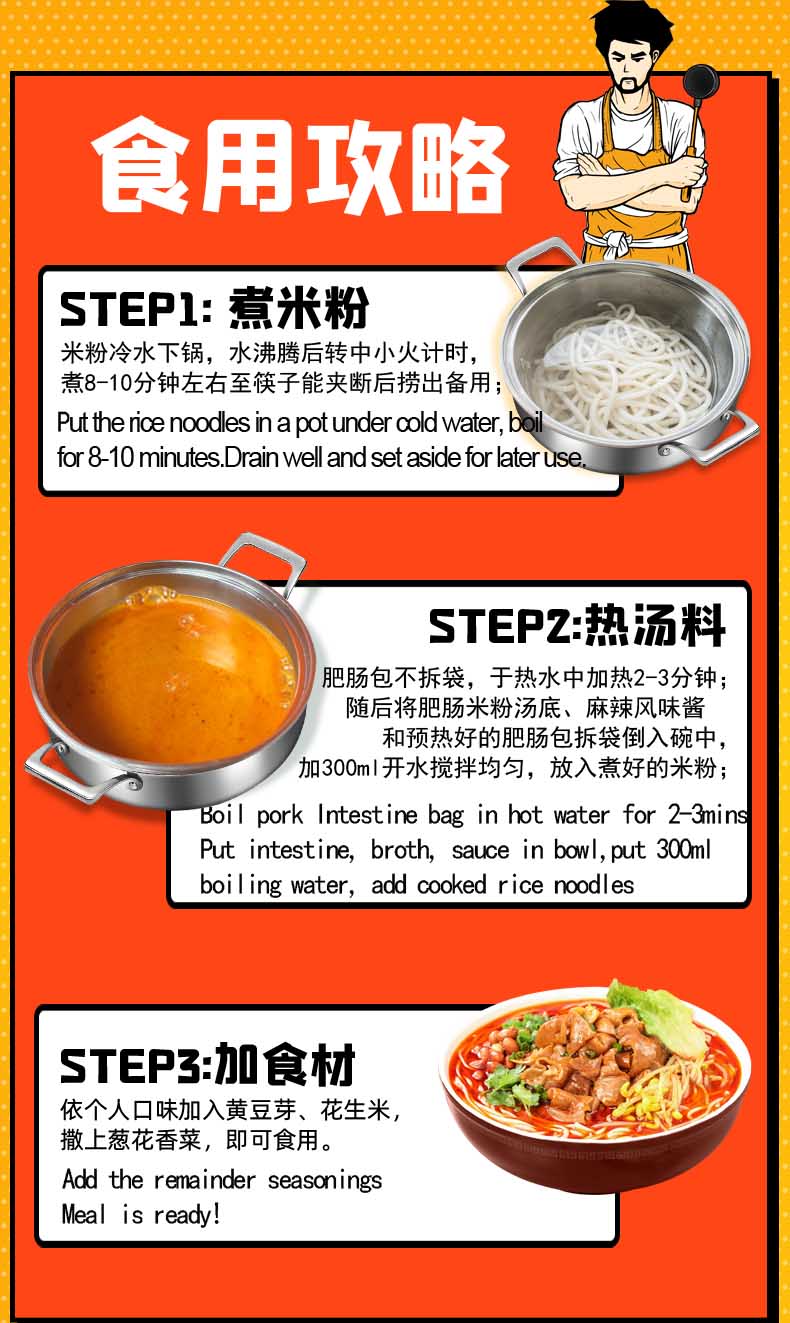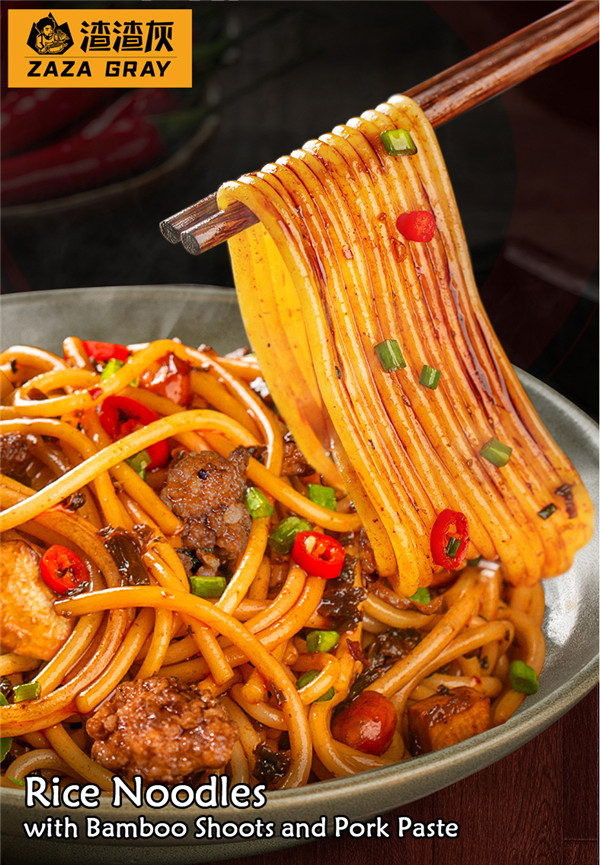Shirataki noodles are noodles that are high in fiber and low in calories. They may provide health benefits, including for your digestive system.
Shirataki noodles are a unique food that’s very filling yet low in calories. Package Dried Rice Noodles

These noodles are high in glucomannan, a type of fiber that has impressive health benefits. In fact, glucomannan has been shown to cause weight loss in numerous studies (1).
This article explains everything you need to know about shirataki noodles, including their benefits and cooking instructions.
Shirataki noodles are long, white noodles. They are often called miracle noodles or konjac noodles.
They’re made from glucomannan, a type of fiber that comes from the root of the konjac plant.
Konjac grows in Japan, China, and Southeast Asia. It contains very few digestible carbs — but most of its carbs come from glucomannan fiber (2).
“Shirataki” is Japanese for “white waterfall,” which describes the noodles’ translucent appearance. They’re made by mixing glucomannan flour with regular water and a little lime water, which helps the noodles hold their shape.
The mixture is boiled and then shaped into noodles or rice-like pieces.
Shirataki noodles contain a lot of water. In fact, they are about 97% water and 3% glucomannan fiber. They’re also very low in calories and contain no digestible carbs (3).
A variety called tofu shirataki noodles is very similar to traditional shirataki noodles, but with added tofu that provides a few additional calories and a small number of digestible carbs.
Shirataki noodles are a low calorie food made from glucomannan, a type of fiber found in the Asian konjac plant.
Glucomannan is a highly viscous fiber, which is a type of soluble fiber that can absorb water to form a gel (4).
In fact, glucomannan can absorb up to 50 times its weight in water, as reflected in shirataki noodles’ extremely high water content (5).
These noodles move through your digestive system very slowly, which helps you feel full and delays nutrient absorption into your bloodstream (5).
In addition, viscous fiber functions as a prebiotic. It nourishes the bacteria living in your colon, also known as the gut flora or microbiota.
In your colon, bacteria ferment fiber into short-chain fatty acids, which can reduce inflammation, boost immune function, and provide other health benefits, according to some older research (6, 7, 8).
A 2014 human study estimated that fermenting glucomannan to short-chain fatty acids produces 1 calorie per gram (g) of fiber (9).
Since a typical 4-ounce (oz), or 113-g, serving of shirataki noodles contains about 1–3 g of glucomannan, it’s essentially a calorie-free, carb-free food.
Glucomannan is a viscous fiber that can hold onto water and slow down digestion. In your colon, it’s fermented into short-chain fatty acids that may provide several health benefits.
Shirataki noodles can be a powerful weight loss tool.
Their viscous fiber delays stomach emptying, so you stay full longer and end up eating less (10, 11, 12).
In addition, fermenting fiber into short-chain fatty acids may stimulate the release of gut hormones that increases feelings of fullness (13).
What’s more, taking glucomannan before consuming a lot of carbs appears to reduce levels of the hunger hormone ghrelin, according to a 2009 study (14).
One meta-analysis found that supplementing with glucomannan significantly reduced body weight in people with overweight or obesity (1).
In another study, replacing a high carb preload with shirataki noodles reduced overall calorie intake by 23%–47%, which could potentially result in weight loss (11).
However, more research is needed, as some other studies have turned up mixed results.
For instance, one study found that glucomannan supplementation had no significant effect on body weight in children with overweight or obesity (15).
Glucomannan promotes feelings of fullness, which may cause a reduction in calorie intake and lead to weight loss.
Glucomannan has been shown to help lower blood sugar levels in people with diabetes and insulin resistance (4, 16).
Because viscous fiber delays stomach emptying, blood sugar and insulin levels rise more gradually as nutrients are absorbed into your bloodstream (10).
In one small study, eating konjac products (such as shirataki noodles) for 12 weeks led to a significant reduction in fasting blood sugar levels and hemoglobin A1c, a marker of long-term blood sugar levels, in people with type 2 diabetes (17).
In another study, consuming glucomannan alongside rice gruel helped prevent increases in blood sugar and insulin levels compared to a control group (18).
Shirataki noodles can delay stomach emptying, which may help prevent blood sugar spikes after meals.
Several studies also suggest that glucomannan may help lower cholesterol levels (19, 20).
Researchers note that glucomannan increases the amount of cholesterol excreted in stool so that less is reabsorbed into your bloodstream (20).
One meta-analysis found that taking 3 g of glucomannan per day reduced LDL cholesterol levels by 10% and levels of non-HDL cholesterol by 7% (20).
Studies show that glucomannan may help lower LDL cholesterol levels, which can support heart health.
Many people have chronic constipation or infrequent bowel movements that are difficult to pass.
Some older research suggests that glucomannan could be an effective treatment for constipation in both children and adults (21, 22, 23, 24, 25).
One study found that glucomannan supplementation could increase stool frequency in children with constipation. However, it had no significant effect on stool consistency or the rate of successful treatment of constipation (26).
Another study showed that glucomannan could help reduce symptoms of constipation in pregnant people by increasing the frequency of bowel movements and improving stool consistency (27).
Glucomannan may effectively treat constipation in children and adults due to its laxative effects and benefits for gut health.
For some, the glucomannan in shirataki noodles may cause mild digestive issues, such as loose stools, bloating, and flatulence (28).
More serious side effects have also been reported, especially when shirataki noodles are consumed in large amounts. For instance, in one case study, a woman developed a stomach obstruction after eating an entire pack of konjac flour noodles (29).
Still, glucomannan is generally safe when enjoyed in moderation.
Nevertheless — as is the case with all fiber — it’s best to introduce glucomannan into your diet gradually.
In addition, some older research suggests that glucomannan may reduce the absorption of certain medications. A doctor or pharmacist can provide guidance on whether you should adjust the timing of your medications if adding shirataki noodles to your diet (30).
Shirataki noodles are safe to consume but may cause digestive issues for some. They may also reduce the absorption of certain medications.
Shirataki noodles can seem a bit daunting to prepare at first.
They’re packaged in fishy-smelling liquid, which is actually plain water that has absorbed the odor of the konjac root.
Therefore, it’s important to rinse them very well for a few minutes under fresh, running water. This should remove most of the odor.
You should also heat the noodles in a skillet for several minutes with no added fat.
This step removes any excess water and allows the noodles to take on a more noodle-like texture. If too much water remains, they will be mushy.
Here is an easy shirataki noodle recipe containing only a few ingredients:
For this recipe, it’s best to use shorter types of shirataki, such as ziti- or rice-shaped noodles.
Shirataki noodles can be used in place of pasta or rice in any dish.
However, they tend to work best in Asian recipes. The noodles have no flavor but will absorb the flavors of sauces and seasonings very well.
If you’d like to give shirataki noodles a try, you can find a wide selection available online.
Shirataki noodles are easy to prepare and can be used in a variety of dishes. They’re especially tasty in Asian recipes.
Shirataki noodles are a great substitute for traditional noodles.
In addition to being extremely low in calories, they help you feel full and may be beneficial for weight loss.
Not only that, but they also have benefits for blood sugar management, cholesterol levels, and digestive health.
Last medically reviewed on May 12, 2023
Our experts continually monitor the health and wellness space, and we update our articles when new information becomes available.
Following a gluten-free diet doesn't have to mean giving up on your favorite pasta and noodle dishes. This article lists 6 of the best types of gluten-
Though pasta and noodles are incredibly versatile, they're also very high in carbs, which some people prefer to limit. Here are the top 11 low-carb…
Though instant ramen noodles may be convenient and cheap, you may wonder about their nutritional value. This article tells you whether instant ramen…
Instant noodles are a popular and inexpensive convenience food. However, serious concerns have been raised about whether they're good or bad for…
Make your instant noodle healthier by adding these simple toppings. We'll show what delicious food combos can enhance your ramen with maximum…
Soy sauce is one of the most popular soy products in the world. This article explains how soy sauce is produced, as well as its potential health risks…
Wondering how many carbs are in a cup of rice, and which type is healthiest? We'll dig into the details and also offer some veggie alternatives.
The weight loss supplement Lipozene claims to cause fast weight loss. This article reviews what it is, whether it works, and its side effects.
Coconut aminos is a popular soy sauce substitute made from fermented coconut palm sap. This article investigates whether it's really a healthier…

Authentic Rice Vermicelli Nutritionists share simple changes you can make to every fall drink on Starbucks’ menu that can significantly reduce the amount of calories, sugar…